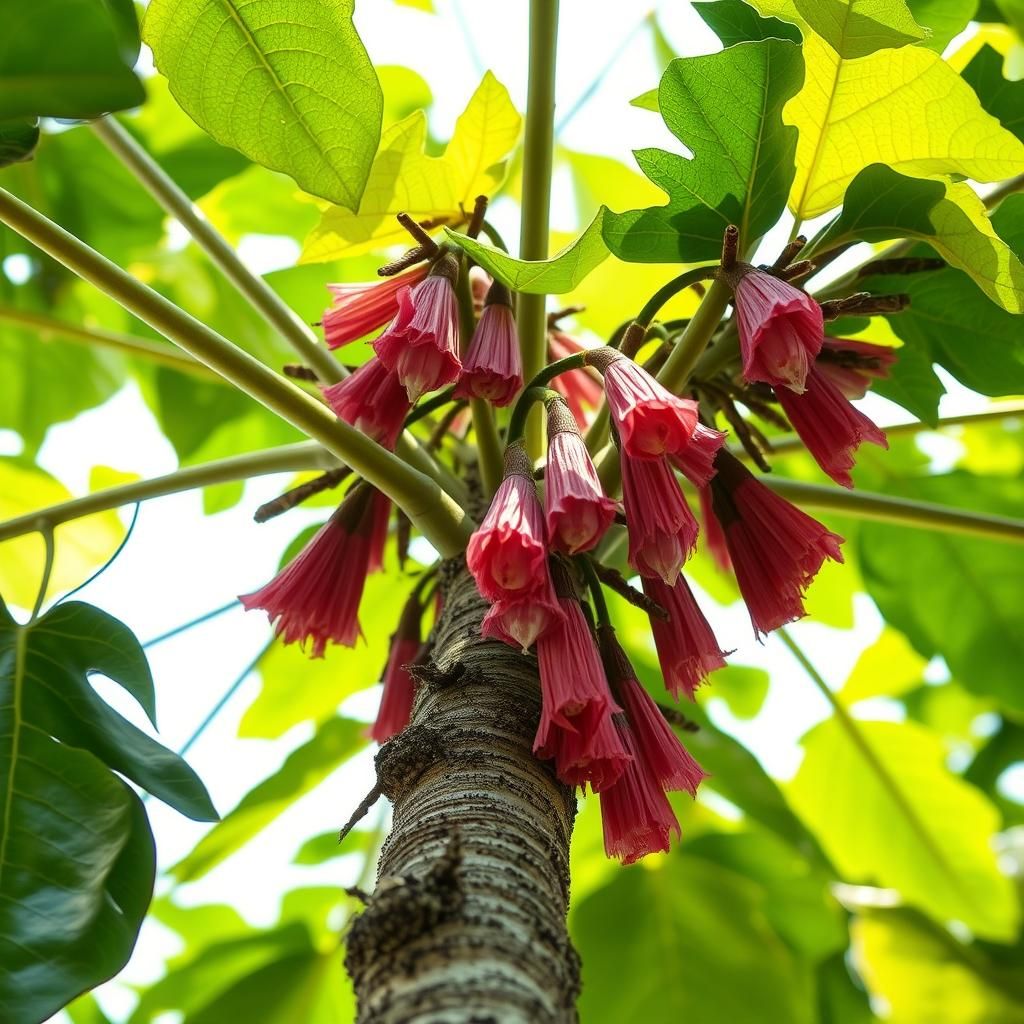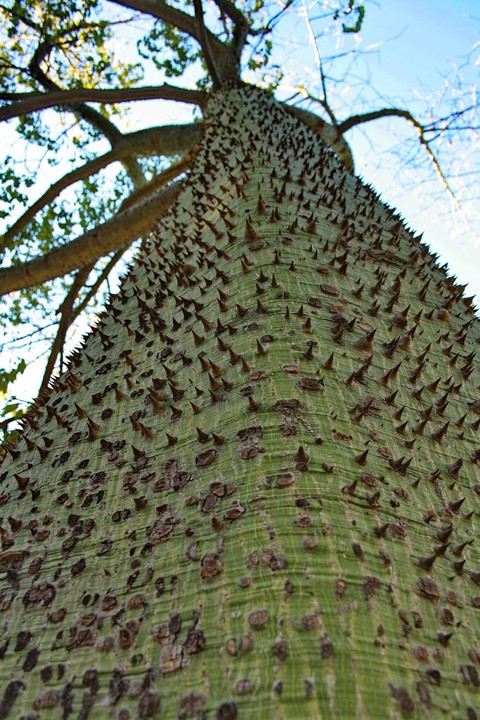Everything You Need to Know About the Silk Floss Tree Ceiba Speciosa: Care, Features, and Uses

The Silk Floss Tree, scientifically known as Ceiba speciosa, is a fascinating species that captivates plant enthusiasts and gardeners alike. With its striking appearance and unique characteristics, this tree has garnered attention for both its ornamental value and practical applications. In this article, we will delve into everything you need to know about the Silk Floss Tree, including its essential care requirements, notable features, and various uses. Whether you are considering adding this beautiful tree to your landscape or simply wish to learn more about its cultural significance, we’ve got you covered.
Understanding the Silk Floss Tree (Ceiba speciosa)
The Silk Floss Tree (Ceiba speciosa) is a remarkable species native to tropical and subtropical regions of South America. Known for its stunning appearance, this tree typically reaches heights of 30 to 50 feet and is easily recognized by its unique trunk, which is covered with spiny thorns that serve as a defense mechanism against herbivores. The tree showcases an impressive display of large, pink flowers that bloom in the spring, attracting a variety of pollinators including bees and birds. Its long, silk-like fibers, which grow from the seed pods, have been used in traditional materials for textiles and insulation, giving the tree its common name. With its striking presence and ecological significance, the silk floss tree continues to fascinate enthusiasts and researchers alike.
Botanical Characteristics
The botanical characteristics of the silk floss tree are noteworthy, as it features a large, bulbous trunk that can be up to three feet in diameter, which serves as a water storage system during dry periods. The tree’s glossy, dark green leaves are palmate, consisting of five to seven leaflets, and help in photosynthesis. The flowers are distinctive, measuring up to 3 inches in diameter, and have a star-like shape with five petals that can vary in color from pale pink to purple. After the blooming period, it produces spiky seed pods that contain fluffy, cotton-like fibers, which aid in seed dispersal.
Habitat and Distribution
The silk floss tree thrives in a range of habitats, predominantly in lowland areas and open forests, particularly in Brazil, Argentina, and Uruguay. It prefers well-drained soils and can often be found near rivers and other water sources, where it can access the moisture necessary for growth. This tree also tolerates a variety of climatic conditions but grows best in regions with a distinct wet and dry season. Due to urban expansion and deforestation, its natural habitats are increasingly threatened, making conservation efforts crucial for preserving the species.
Cultural Significance
In various cultures, the silk floss tree holds significant value. Indigenous communities have long utilized its fibers, known as silk, for crafting and insulation in textiles due to their lightweight and thermal properties. The tree is also celebrated for its striking beauty, often featured in landscaping and ornamental planting in public parks, where its vibrant blooms can enhance aesthetic appeal. Additionally, it symbolizes strength and resilience in many cultures, often being associated with fertility and prosperity.
Culinary Uses
While the silk floss tree is primarily recognized for its ornamental value, some cultures have been known to utilize its seeds, which are rich in essential fatty acids and can be consumed when prepared correctly. However, the seeds must be cooked to remove any potential toxins. In some regions, the tree also yields a sap that can be incorporated into traditional remedies, showcasing the plant's versatility and importance in local cuisines and medicinal practices.
Ecological Impact
The silk floss tree plays a vital role in its ecosystem by providing habitat and sustenance for numerous species of insects, birds, and mammals. Its flowers attract various pollinators, while its seeds serve as food for many small animals. Furthermore, the tree contributes to soil health by returning nutrients through leaf litter and supports biodiversity by providing a sheltering habitat for a variety of organisms. Protecting the ecological niches associated with the silk floss tree is essential for sustaining the balance within its environmental community.
| Characteristic | Detail |
|---|---|
| Height | Up to 50 feet |
| Trunk Diameter | Up to 3 feet |
| Flower Color | Pink to Purple |
| Habitat | Tropical and Subtropical Regions |
| Uses | Textiles, Food, Medicine |
Are silk floss trees messy?

Silk floss trees, also known scientifically as Chorisia speciosa, are recognized for their stunning pink flowers and distinctive seed pods. However, they can indeed be considered messy for several reasons. The tree drops its leaves in the fall, shedding them all at once, which can create a significant amount of debris on the ground. Additionally, the large, spiky seed pods that form after blooming can create a greater mess, as they eventually fall and scatter their seeds in the surrounding area. This not only leads to litter but can also result in the establishment of unwanted seedlings in your garden or yard.
Leaf Drop of Silk Floss Trees
Silk floss trees are deciduous, meaning they lose their leaves during the colder months. This process can be quite dramatic as the trees shed their leaves all at once rather than gradually throughout the season.
See also:
- Seasonal changes: The leaf drop usually occurs in late autumn, leading to a sudden accumulation of leaves on the ground.
- Cleanup: Homeowners may find themselves needing to rake or collect fallen leaves repeatedly during this period.
- Potential for maintenance: Depending on the size of the tree, accumulated leaves can attract pests or create a slippery surface when wet.
Seed Pods and Their Impact
After blooming, silk floss trees produce large seed pods that are spiky and can be quite cumbersome.
- Size and weight: The pods are large and can drop from significant heights, potentially causing damage to property or vehicles.
- Seed scattering: When the pods open, they can scatter seeds far and wide, leading to sprouting in unintended locations.
- Cleaning up pods: The presence of these pods can require regular cleanup to maintain a neat landscape.
Pollination and Attracting Wildlife
Silk floss trees are highly attractive to various pollinators, which leads to increased wildlife activity in the vicinity.
- Bee attraction: The beautiful flowers draw in bees, which can alleviate potential pest problems but also increase the mess due to bee activity.
- Birds and other animals: The fallen seeds can attract birds and small mammals, contributing to further mess.
- Natural ecosystem: The presence of wildlife can enrich the ecosystem but may complicate maintenance tasks for homeowners.
Tree Size and Maintenance Requirements
Silk floss trees can grow quite large, which can amplify the messiness associated with them.
- Mature height: These trees can reach heights of up to 40 feet, resulting in larger areas affected by leaf and pod drop.
- Root structure: Their extensive roots not only impact nearby soil but can also disrupt sidewalks or garden paths.
- Regular pruning: To manage messiness, regular pruning may be necessary, adding to ongoing maintenance efforts.
The various debris from silk floss trees can attract different pests, making it a consideration for potential homeowners.
- Debris attraction: Piles of leaves or seed pods can harbor pests like insects or rodents, which may become a nuisance.
- Diseases: Fallen leaves might create conditions conducive to fungal diseases or pests that affect the tree's health.
- Management strategies: Homeowners need to be aware of these considerations and implement a pest management strategy to control any issues that arise.
Can you eat the fruit of a silk floss tree?

The fruit of the silk floss tree (Ceiba speciosa), also known as the kapok tree, is indeed a subject of interest regarding its edibility. While the tree itself is renowned for its striking appearance and fluffy seed pods, it is important to understand whether its fruit can be consumed safely.
Understanding Silk Floss Tree Fruit
The silk floss tree produces large, spiky pods that contain a cotton-like fiber. These pods house seeds that are surrounded by a fluffy substance. The edibility of the fruit is questionable because, although some parts of the tree can be consumed, the pods themselves are not commonly eaten.
- The structure of the pods includes a hard outer shell that is not typically ingested.
- Inside, the fluffy fiber is not nutritious and offers no significant health benefits.
- Some cultures have experimented with the seeds, but caution is advised due to possible toxicity.
Potential Uses of Silk Floss Tree Fruit
While direct consumption of the fruit is not recommended, there are potential uses for parts of the silk floss tree. Many find applications for the fibrous material and seeds.
- The fiber can be used for stuffing in pillows and toys.
- Seeds may have medicinal properties, though this is not well documented.
- Some communities may utilize aspects of the tree in traditional practices, highlighting its importance in local culture.
Health Risks and Considerations
Before considering any form of consumption, it's crucial to acknowledge the health risks associated with silk floss tree fruit. Some parts may lead to adverse reactions.
- Ingestion of unprocessed seeds can pose a risk of toxicity.
- The pods can cause gastrointestinal discomfort if consumed.
- Always consult experts or local guidelines before trying unfamiliar fruits.
Cultural Significance of the Silk Floss Tree
The silk floss tree holds a significant place in various cultures, which can influence perceptions of its fruit. Its cultural relevance often impacts how its parts are used.
See also:
- In some regions, the tree is revered and considered sacred.
- It serves as a source of inspiration in art and literature.
- Traditional uses aside from fruit consumption may focus on its lumber or fiber.
Conclusion on Edibility
The consensus regarding the edibility of the silk floss tree’s fruit is that while it is not commonly consumed, certain components may have secondary uses. More research and community knowledge can contribute to understanding its potential better.
- Many consider the fruit to be non-edible for general consumption.
- Caution is advised due to possible health risks.
- Exploration of cultural uses provides insight into the broader significance of the tree.
Are silk floss tree roots invasive?

Silk floss trees (Ceiba speciosa) are known for their dramatic appearance and large, spiky trunks, but their roots can also raise concerns regarding their invasiveness. These trees are native to tropical and subtropical regions of South America, and while they are admired for their beauty, their roots can pose challenges in certain environments.
Understanding the Roots of Silk Floss Trees
The roots of silk floss trees are extensive and can spread out significantly as the tree matures. Their root system is generally characterized by the following features:
- Taproot Development: Silk floss trees develop a strong taproot that anchors them deeply into the soil.
- Surface Roots: In addition to a deep taproot, they have horizontal surface roots that can disrupt pavement, sidewalks, and foundations.
- Adaptation to Environment: Their root structures enable them to adapt to various soil types, making them resilient in different landscapes.
Invasiveness of Silk Floss Tree Roots
While silk floss tree roots are not classified as invasive in the same way that some other species are, they can still cause significant problems in urban or crowded environments, such as:
- Pavement Damage: The expansive roots can lift and crack sidewalks and roads, leading to safety hazards.
- Competition with Native Flora: If planted in non-native regions, they may compete for resources with local plants and trees.
- Interference with Infrastructure: Roots may invade water pipes, sewer lines, and foundations, causing costly repairs.
Management Practices for Silk Floss Trees
To mitigate potential issues arising from silk floss tree roots, several management practices can be implemented:
- Proper Placement: Plant silk floss trees a safe distance from structures, sidewalks, or any underground utilities.
- Root Barriers: Installing root barriers can help restrict the spread of roots into unwanted areas.
- Monitoring Growth: Regularly inspect the area for early signs of root disruptions or damage so they can be addressed promptly.
Comparing Silk Floss Roots to Other Species
When evaluating the invasiveness of silk floss tree roots, it's important to compare them to other tree species known for aggressive root systems:
- Ficus Carica (Fig Trees): Known for their aggressive root systems that can cause severe damage to infrastructure.
- Populus deltoides (Cottonwood): Cottonwood trees have widely spreading roots that can also cause significant interference.
- Ailanthus altissima (Tree of Heaven): This species is notorious for its invasive roots that can overwhelm surrounding vegetation.
Environmental Considerations of Silk Floss Trees
The environmental impact of silk floss trees should also be taken into account, especially in non-native regions, including:
- Soil Health: Their roots can alter soil composition and hydrology, affecting surrounding plant life.
- Landscape Design: Consideration of their growth patterns is essential for sustainable landscaping in urban areas.
- Ecosystem Balance: Their introduction may disrupt the balance of native ecosystems if not managed properly.
Questions from Our Readers
What is the Silk Floss Tree (Ceiba speciosa)?
The Silk Floss Tree, scientifically known as Ceiba speciosa, is a large deciduous tree native to South America. Its most striking feature is its pink flowers that bloom in spring, complemented by its bottle-shaped trunk, which can store large amounts of water.
How tall does the Silk Floss Tree grow?
The Silk Floss Tree can grow to heights of 30 to 50 feet (9 to 15 meters), making it a prominent feature in the landscape. Its spread can be equally impressive, reaching up to 25 feet (7.5 meters) in diameter, providing ample shade and visual appeal to gardens and parks.
See also:
What are the uses of the Silk Floss Tree?
The Silk Floss Tree is valued not only for its aesthetic qualities but also for its fiber content derived from its seed pods. This fiber can be used to produce textiles, and the tree itself is often planted as an ornamental specimen in urban settings due to its dramatic appearance.
Is the Silk Floss Tree easy to care for?
Yes, the Silk Floss Tree is relatively low-maintenance. It thrives in well-drained soils and prefers full sunlight, making it an ideal choice for gardeners looking for a resilient tree. However, it should be protected from frost and extreme cold as it is sensitive to lower temperatures.

If you want to read more articles like Everything You Need to Know About the Silk Floss Tree Ceiba Speciosa: Care, Features, and Uses, we recommend you check out our Landscaping category.
Leave a Reply
Related Articles